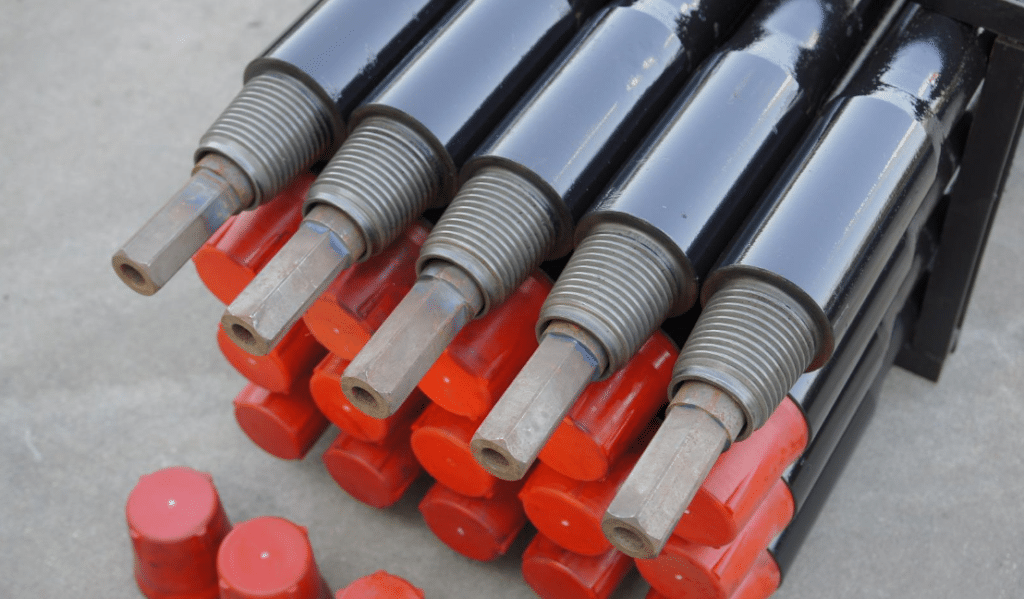A drill pipe is a thick-walled, hollow piping system that transmits torque to a drill bit. The pipe is manufactured to withstand severe pressure and distortion. Modern drill pipes are made from tubing, a box tool joint or a pin tool joint, these are essential tools for transferring power and mud in oil drilling equipment. It is used frequently, often in alternating stress and in the harsh conditions of friction and collision with the well wall, often become the weak link of the whole drilling tool, cracks, perforations and even fractures often occur. Failure analysis is an important step to determine the type, cause and treatment of drill pipe failure, so as to improve drill pipe design and processing technology, thus reducing the cost of oil drilling. Therefore, as a drill pipe manufacturer, you should be familiar with the specific requirements of drill pipe and how the high strength and reliability of drill pipe will work for the oilfield industry. This article discusses the main causes of drill string failure and the most common types of failures. It also explains why drill pipe failures are so widespread. Also, it describes how to avoid the dreaded failure.

- Excessive deformation. Excessive deformation is caused by working stress exceeding the yield limit of the material. If the drill pipe joint under load, the elongation of the thread part, the bending and torsion of the drill pipe body. Unlike in other types of drilling operations, where extensive plastic deformation is often seen, the rate of propagation of a fatigue fracture is extremely rapid. Moreover, it is not always possible to identify the origin of the fracture until the end of the drill’s life.
- Fracture. Fracture accounts for a large proportion of drill pipe failure accidents, and the harm is serious. It mainly includes overload fracture, low stress embrittlement, stress corrosion, hydrogen embrittlement, and metal fatigue. The most common type of drill string failure is a fatigue failure. Fatigue failure occurs when cyclic loads cause repeated or fluctuating stresses. This may result in cracking, parting or collapse. While a multitude of factors contributes to the failure of a drill pipe, the main cause is metal fatigue. Metal fatigue occurs when the stress level is abnormally high. An example of a metal fatigue failure is when a drill pipe is under-torqued before a hole is drilled. Another factor contributing to the failure is the reversal of bending load during a curved section of the wellbore. When this happens, the stress distribution in the pipe will be distorted, resulting in a loss of control of the well.
- Surface damage. Including corrosion, wear, and mechanical damage.
In order to improve the working life of drill pipe, machining materials must have good mechanical properties such as torsional, impact and bending resistance. Good processing technology and surface treatment measures must be adopted to improve surface quality and eliminate surface stress concentration to the greatest extent. The materials of drill pipe are generally sulfur-resistant materials, aluminum alloy materials, titanium alloy materials, ultra-high strength steel and new carbon fiber composite materials, etc. The commonly used drill pipe are X95, G105, S135, SS2205, and so on. Most of them are seamless steel tubes with medium carbon alloy structures. The alloy elements should contain Cr, Mo and other elements to improve the tensile strength and impact toughness of the material, and Mn, Si and other elements to improve the elasticity of the material (that is, the bending performance). Sometimes also contains trace B, V and other elements to improve the hardenability of materials. Commonly, the material used in drill pipes is quenched and tempered to attain high yield strengths.
In addition, the most corrosive element found in steel pipes is H2S. Therefore, controlling mud pH, using corrosive scavengers, and minimizing corrosion can help to prevent pipe failure. Although the optimum torque is an important step in preventing a drill string from breaking, improper handling can also lead to the same problem. Overtightening can also result in the formation of overpressures, which can lead to the collapse of the pipe. A good way to protect a drill pipe from failure is to use proper handling procedures.






